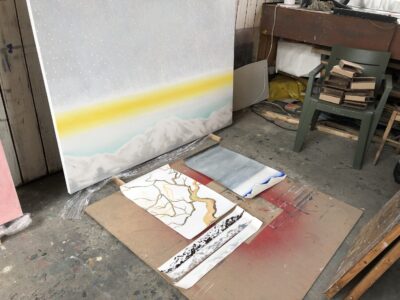27 November 2023
Interview
I would become a travelling artist, Anoek Mensink
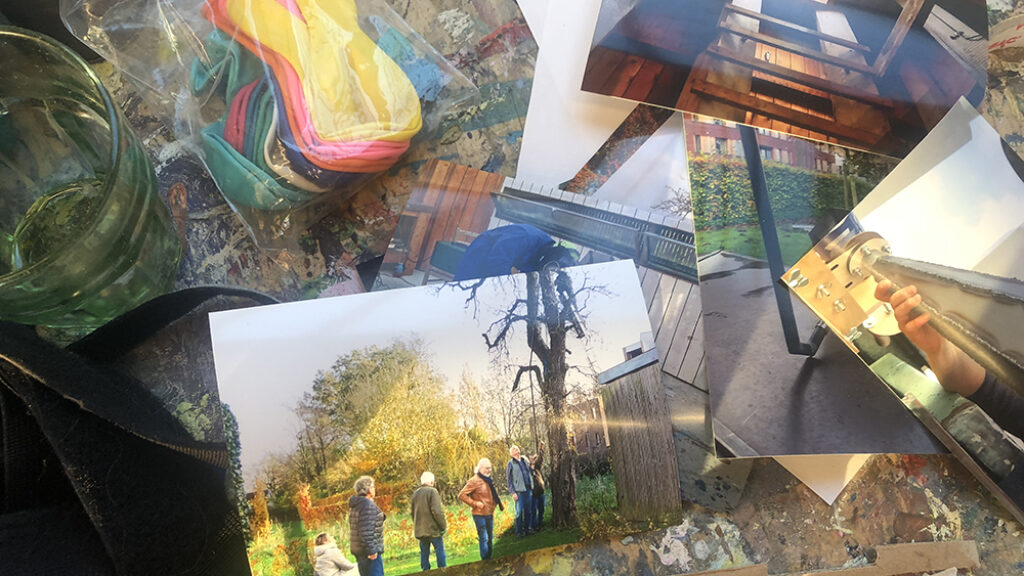
Upon arrival in Zundert, the studio is empty. Artist Anoek Mensink is standing outside among the remains of the vegetable garden, which later became a wild flower garden and is now an empty, evergreen space. She is busy placing a horn she has welded. The idea is to place it on a tree trunk, but she is not quite succeeding yet. There are still a few days left to realise this before the exhibition, which marks the end of the working period, opens.
You were here for a whole month, was that enough time for you?
Normally, I spend much more time on the work process. The month I have here is quite short, so I did some research beforehand. In the last week of September, I went camping in Schijf. I cycled there from my home in Utrecht, which took me about five to six hours. I am used to cycling long distances. I have a thing about borders, and during those few days I explored the area and the border with Belgium.
Boundaries?
It started with Google Maps. The grey lines on my phone that were supposed to correspond to the invisible lines in the landscape. I noticed how close you are to the border here, with the River Aa or Weerijs in between. That border is completely straight, whereas you could follow the natural boundary of the river. What struck me is that part of the border does meander and is shaped by the river, and there the river has been straightened again. I found that interplay of lines interesting, but still difficult to capture in a project. That’s how my research began.
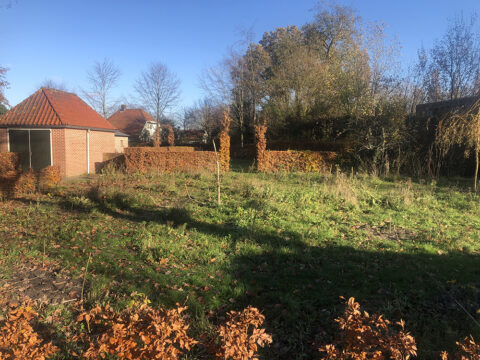
Photo by Esther van Rosmalen
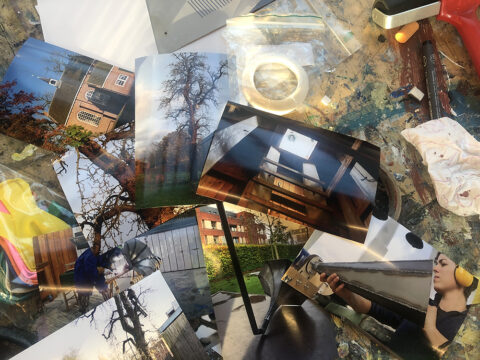
Photo by Esther van Rosmalen
So no boundaries, but you did go further with a horn. How did that happen?
I went to Zundert and saw the pear tree laden with pears falling onto the roof of the studio. The artist who was then in residence here found it disturbing. I thought the sound was funny, and also that it happened spontaneously. I noticed that most of the artists who have worked here focus on how Vincent viewed the environment, so I wanted to focus on a different sense. In my work, I often look for a different perspective on how we can experience public space, or a place, in a new way. So I focused on sound. And how to capture and amplify that sound. I started reading a book about Vincent that described his relationship with sound. It mentioned that he learned to play the piano but was dismissed by his teacher. Making music or sound was not his goal; it was about the sound of colours. He also wrote about this to his brother Theo, and many more letters on this subject can be found in the book. What Vincent wanted, for example, was that when you looked at his painting of ears of corn, you could hear the rustling of the wind. And he wanted the painting La berceuse to hang in a sailor’s café, with the painted sunflowers on either side. His intention was to offer comfort to sailors against loneliness. That they would feel the swell of the sea, the reassuring rocking with the lullaby from their childhood in their ears. Vincent wrote a lot about the experience you could have as a viewer beyond the paint. That is something I do not know from him, but I feel it too.

Photo by Esther van Rosmalen
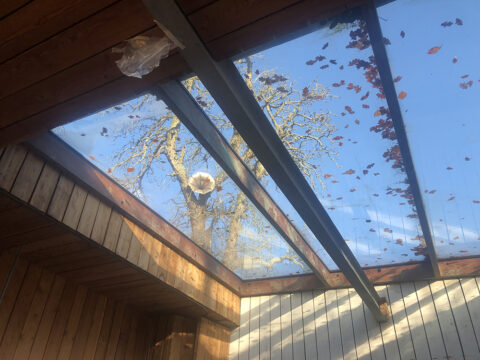
Photo by Esther van Rosmalen
And how did sound come to play a role for you?
I started researching how I could work with sound. The horn I made is similar to the horn used in the first gramophone players. There is a lot of information available about this, but I had to test it myself. I did this in advance using cardboard and wooden moulds in the workshop at the St. Joost art academy, where I recently graduated. Here in Zundert, I have the space, but I had to bring the workshop with me. I collected the tools, materials and moulds and started welding here. I used a new technique for this, where the gas is in the wire, so I had to try that out too. Only when it was finished could I listen to see if it would work. And it did. It was really amazing to suddenly hear so much.
And what sounds did you want to hear?
From day one, I started noting down what I heard. I was looking for sounds in the village that still sound the same as they did in Vincent’s time, such as the jackdaws sitting in the beech trees; at dusk, they make quite a racket. That struck me immediately. Someone from the church told me that one of the beech trees has been there since 1805, and its leaves still rustle the same as they did back then. The rain on the window, the sounds of the bells in Zundert. Then I started to narrow it down and asked myself what I wanted to amplify from the environment. I asked myself questions such as: what does a storm sound like high up in a tree? I am interested in heights because they offer a completely different perspective on a place. I hung one of the horns high up in the pear tree, with a tube leading down so that you can listen to it on the ground. It feels as if you are moving yourself by hearing sound from above, a really beautiful discovery. Someone outside can even eavesdrop on our conversation in this studio, that’s how well it works.

Photo by Esther van Rosmalen
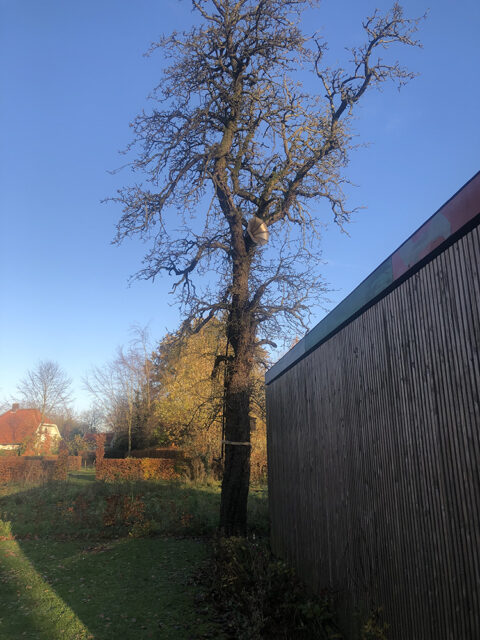
Photo by Esther van Rosmalen
That’s one question, are there any more?
Certainly. What is sound if it can be an image again? Colour and sound are both vibrations, and how do you show that? That’s when I came across the phonograph, which Edison was the first to invent. I didn’t understand much from the drawings I found, but the explanation on YouTube helped, and then I started making a phonograph too. It’s basically a cylinder covered in tin foil with a needle that records the vibrations when you turn the cylinder. This is done via a speaking tube or horn. Because I didn’t have any tin foil, I used aluminium foil, which worked, but the image it produced wasn’t interesting. Then I used carbon paper. I can’t play that, but I can show the lines on the paper.
What sounds do I see here?
First the jackdaws. Then I wanted to record the town hall clock. I simply walked up to the counter and asked if that was allowed. Then someone in a smart suit came over to tell me that it was and would take me to the tower. I hadn’t really expected that and didn’t have my phonograph with me. I quickly fetched it and then we went all the way up to the wedding room. There is a hatch in the ceiling that leads to a space above with walkways, otherwise you would fall through the ceiling. After two ladders, there was another hatch and then I was sitting with my head in the carillon. It was very windy. I made the recording with my ear protectors on, and when I was done and back downstairs, I discovered that the needle had broken. So I had to do it again. The recording isn’t perfect, but the story is beautiful. The fact that I have a job where you suddenly find yourself inside a bell – you can’t plan moments like that.
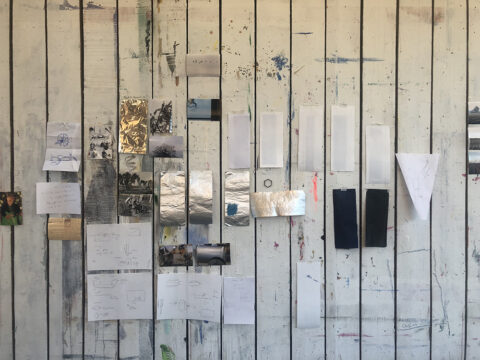
Photo by Esther van Rosmalen

Photo by Esther van Rosmalen
Your work period is almost over and you need to start thinking about setting up the gallery. What is the plan?
I am going to move the studio to the gallery. My work is outside, so I have the space to do this. I will display the process wall that was created here. I also made a film of the entire process by placing a camera in the studio. I will show that too. The studio has a life that is not present in the white cube. I think that in this way the story can be told, as well as what happens outside. The film also includes a beautiful shot of the gardeners hanging the horn in the pear tree. I also love telling stories and am looking for a form that doesn’t require my presence. The power of storytelling is within me, but that experience must also exist without me. That is now happening through the horns. It’s nice, now that I’m still here, to hear people’s reactions and what they think of it.
What kind of responses did you receive?
Then we have to walk to the post box now. I sent myself a letter about my experience here. Like about the gardener Carla, she is very involved and sent me photos of letters from Vincent that she has read. I also took photos of the collaborations myself and sent them to people. I described those kinds of moments. But sending and receiving post is also part of it. I have lived in three places, including this one. The first place is with my parents, where I live because it gives me the freedom to go away for longer periods of time. Then I live somewhere else for a while, and by sending a letter to myself at the address where I am, I record that.
I studied in Finland. I love the landscape and the snow and ice plains. Finland was a test for me to find out how a new environment would influence my work. There, I started to focus more on creating site-specific work. After that, I knew I would become a travelling artist and that I wanted to collect more and more places, pieces of home, that I could carry with me on other adventures. Through my work, I can help local residents see their surroundings differently, even if only for a moment.
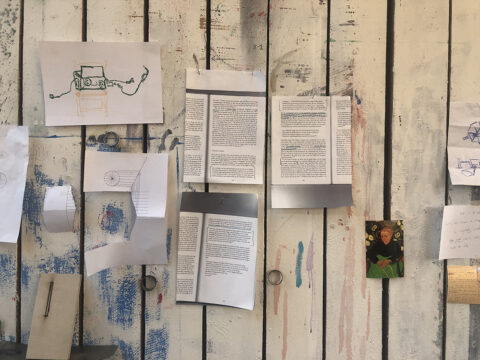
Photo by Esther van Rosmalen

Photo by Esther van Rosmalen
And what comes to mind when you think of Zundert?
I have given this period a title: A symphony in blue and yellow. I took that from one of his letters. He wrote a lot about harmony and symphony in nature. That appeals to my imagination, and although I am not particularly interested in colour, I am interested in trees. I like to keep my work pure and I love natural materials. What matters is what a place asks of me. One consequence may be, as it was this time, that I have to explore a new medium. And that is very exciting to do. I don’t yet know whether sound will play a role in my work. I am mainly curious to see where this project will take me.
Esther van Rosmalen, November 2023


